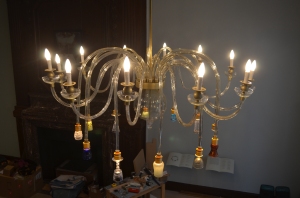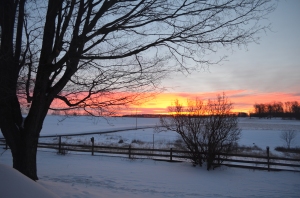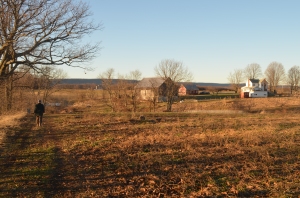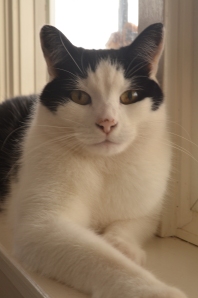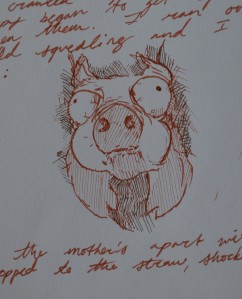Robert leans his tall frame over the tangerine, 2000 degree heat of the glass furnace and peers in as he collects a molten glob of glass on the end of his blowpipe. He rolls the long, hollow metal tube in his fingers to keep the batch centered and get rid of drips—this process is called “gathering” and resembles scooping honey out of a jar with a chopstick.
Robert’s glass blowing studio is very warm: about 95 degrees. Outside, a harsh winter wind scrapes across the window panes, whipping up stinging granules of snow and dirt into the chalky gray sky. Robert walks over to a nearby steel table, twirling the pipe continuously. He begins to shape the cherry red mass, rolling it at an angle back and forth across the surface. This process, called marvering, edges the glass toward the end of the pipe while simultaneously cooling and firming the sides. Robert brings the end of the blowpipe to his mouth and lets out an abrupt “pwuh” before quickly capping the end. The air is thus trapped inside the pipe. Because oxygen expands very rapidly at high temperatures, it takes only a small blow to create a bubble inside the blob of glass. The bloom of air navigates its way along the hardened sides toward to the tip, an effect Robert needs for this specific project.
We are helping Robert to fashion chandelier arms for an exhibition at the Jewish Museum in New York City. We have only a few days to make six arms to replace the six broken ones that arrived from a factory in China earlier that week. Interestingly, Robert commissions the majority of his mass produced glassware to the Chinese, something he says he has to do in order to stay in business. Still, the show must go on, and we need to find a way to replicate the remaining unbroken arms.
Robert slides open the door to a second furnace, called the glory hole. He inserts the rapidly cooling glass into the shimmering blaze, spinning the pipe on two metal bearings. Dry heat pours over my face as Maggie and I scurry around trying to anticipate steps in this dance we do not know. Once the surface of the glass has been sufficiently heated, Robert strides over to the bench. The spinning orb casts orange shards of lights onto his face and shirt. He begins rolling the pipe back and forth along two flat metal runners situated on either side just above his belly button. The bench resembles a surgeon’s table, with a variety of tools at his hips. Robert molds the glass with blocks (wooden implements dipped in water), cups it, stretches it, pinches it, and snips it to his liking.
I turn on a blow torch and begin heating a metal form resting on the marver (the steel table). I sweep my arm back and forth, trying my best to evenly heat the aluminum arch. In my periphery, I can discern Robert and Maggie’s forms weaving to and from various parts of the studio: Robert gathers, marvers, blows, reheats, forms, flattens, and elongates at the bench, reheats, and blows downwards into a three-pronged form that gives the arm its ridges. Maggie trails him; opening and shutting doors, wetting the forms, and blowing into the pipe as needed. Pain creeps into my limbs as I methodically wash the marver with whooshing fire.
Finally, Robert removes the glass, now a bulbous, triangular mass, from the glory hole, swings the pipe up and hangs it on a hook from the ceiling. Maggie hands him the shears, I turn away from the superheated form with the blowtorch ready. Robert begins pulling, stretching; the glass droops like taffy. I apply the flame to areas that are too thick. Robert grasps the pipe in one hand and the shears holding the tip in the other, and swiftly lays the curving arm onto the metal form. I continue to blast the thick spots with fire while Robert pulls on both sides. He then dips the shears in a water bucket, applies a few drops to the end of the pipe, and with a single strike, the glass comes loose. Maggie is prepared; she hands him a pair of super insulated gloves to grab the piece. I hurry over, open the annealer, and Robert carefully places the arm next to our three previous attempts.
Note: An aneeler is a type of furnace which cools the glass at a very slow rate, in order to prevent cracking or breaking from “thermal stress.”


